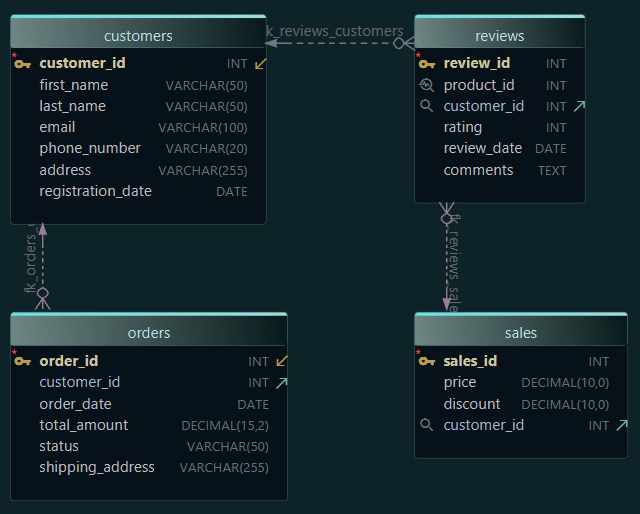Schema Design in SQL vs NoSQL - A Visual Comparison

When planning a new application, one of the first things to figure out is how your data will be structured. The way you organize and relate data will affect speed, flexibility, and how easy it is to make changes later.
In this article, we’ll look at the key differences between SQL and NoSQL databases, especially how they handle schema design. We’ll use easy-to-understand examples and a side-by-side comparison to help you decide which type of database fits your project best.
What Is Schema Design?
A schema is like a plan or layout that shows how data is stored in a database. It defines what kind of data you can store, how different pieces of data connect to each other, and what rules the data should follow.
A good schema:
- Helps prevent errors
- Makes queries faster
- Keeps your data clean and organized
SQL and NoSQL: Basic Overview
SQL Databases (Relational)
SQL databases store data in tables with rows and columns. Each table has a clearly defined structure, and different tables can be linked together using keys. You must define the structure of your data before inserting it.
Common examples: MySQL, PostgreSQL, Oracle, MS SQL Server
NoSQL Databases (Non-relational)
NoSQL databases store data in a more flexible way. The most common type is document-based, but others include key-value, graph, and column-based models. Each document can have its own structure, and changes are easier to apply.
Common examples: MongoDB, Cassandra, CouchDB, Neo4j
Key Differences in Schema Design
Here is a simplified comparison table using different wording to explain how SQL and NoSQL databases differ in design and use.
| Feature | SQL (Relational) | NoSQL (Non-relational) |
|---|---|---|
| Data Structure | Organizes data in rows and columns within tables | Stores data in flexible formats like documents or graphs |
| Schema | Structure is defined before storing data | Structure can change from one record to another |
| Scalability | Scales by upgrading to stronger machines | Scales by adding more machines to the system |
| Data Consistency | Uses strict rules to keep data accurate and reliable | Prioritizes availability, allowing some inconsistency |
| Query Style | Uses standard SQL language for reading and writing data | Depends on the database (e.g., MongoDB uses custom syntax) |
| Performance | Good at handling heavy queries and many transactions | Performs well with high volumes and fast interactions |
| Common Uses | Great for apps with structured data like banking or ERP | Better for apps with fast-changing or varied data |
| Examples | MySQL, PostgreSQL, Oracle, Microsoft SQL Server | MongoDB, Cassandra, CouchDB, Neo4j |
Now that we’ve seen the basic differences, let’s explore how this plays out when you actually design a database.
How Schema Design Works in Practice
Let’s look at how database modeling typically works in relational databases like PostgreSQL or MySQL, compared to document databases like MongoDB.
Modeling in SQL Databases (RDBMS)
In traditional SQL databases, the process often starts with careful planning.
- You design the schema first: tables, fields, relationships, data types, and constraints.
- Then you build the application around that fixed structure.
Changing the schema later can be complex and risky, especially once the system is live. That’s why upfront design is so important.
Relational databases usually scale vertically, which means upgrading the server when traffic increases.

Modeling in MongoDB
In MongoDB, the process is often reversed.
- You start building the app right away and store data without needing to define a structure upfront.
- The schema is flexible, and you refine it over time as features are added.
This allows faster development, but also brings challenges. If you're not careful with structure, you might end up with inconsistencies.
MongoDB also scales horizontally, meaning it can spread data across multiple machines - a big advantage when dealing with lots of traffic.

Understanding Relationships: SQL vs MongoDB
To make this more concrete, let’s say you're designing a movie app with users, movies, and reviews.
SQL: Structured and Enforced
In relational databases:
- You define the relationships upfront, using foreign keys.
- A
reviewtable might have auser_idthat must match a real user in theuserstable. - The system won’t let you insert invalid data, and it may block deletes that would break other records.
This approach keeps your data clean and consistent. Everything is normalized and safe by default.
MongoDB: Referenced but Not Enforced
In MongoDB, you can still use referenced relationships using ObjectIds.
For example, a review document might store a user_id that points to a document in the users collection. But MongoDB won’t enforce that link. If the user is deleted, the review remains - now disconnected.
You get flexibility, but it's up to you to manage consistency.

MongoDB’s Other Option: Embedding
MongoDB also allows embedding- storing related data inside the same document.
Let’s say each movie document includes a nested list of reviews, with user info and comments all in one place.
This works well when the data always travels together:
- It’s faster to read because no joins are needed
- You can retrieve everything in one query
But embedding has tradeoffs:
- If the same user info appears in many places, it becomes harder to update.
- You lose the benefit of keeping user data in one place.

That’s the flexibility of MongoDB - you choose between referencing and embedding, depending on what fits best.
Visual Example: SQL vs MongoDB Schema
Designing a database by writing code can be difficult, especially when working in a team. A visual tool like DbSchema can help:
-
You can build diagrams of your data structure
-
Define validation rules visually, even for MongoDB
-
Compare changes over time
-
Share your design as interactive documentation
-
Use Git to work with your team on the same schema
-
In SQL, the structure is strict. You define the tables, relationships, and rules up front. Everything is enforced by the database engine. Read more about how to design SQL databases here.

In MongoDB, the structure is more flexible. You can start without defining anything, and documents shape themselves as the application grows.
Still, this flexibility doesn’t mean you have to give up structure entirely.
Even though MongoDB doesn’t enforce a schema by default, you can create and maintain one visually using DbSchema.

Read more about how to design MongoDB databases here.
When to Use Each Type
SQL is a good choice if:
- You need strong rules to keep data clean
- Your data has a clear structure and relationships
- You work with complex reports or transactions
NoSQL is better if:
- Your app changes often and needs flexibility
- You deal with large amounts of data quickly
- Your data doesn’t always follow the same format
Final Thoughts
SQL and NoSQL each have their strengths. The right choice depends on your project and how your data behaves.
- If you need structure and control, SQL is the way to go.
- If you need speed and flexibility, NoSQL is a strong option.
Whichever you choose, having a clear schema and a way to design it visually can save you a lot of time.
Want to design MongoDB or SQL schemas visually? Start with DbSchema for free and avoid structure mistakes from the beginning.







